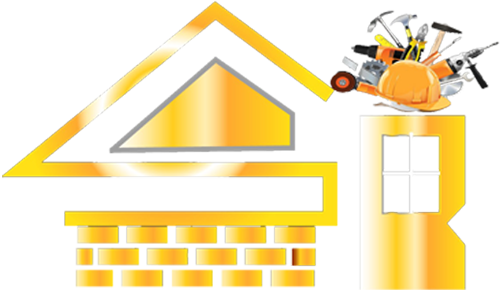Have you ever imagined what common issues can affect your commercial roof in Brooklyn? Roof problems can sneak up on you and lead to costly repairs. In Brooklyn, your roof is exposed to harsh weather, foot traffic, and pollution, which can cause significant damage. In this guide, we’ll cover the 12 most common commercial roof issues and their solutions. By understanding these issues and their solutions, you can maintain your roof in good condition and save money. Let’s jump in!
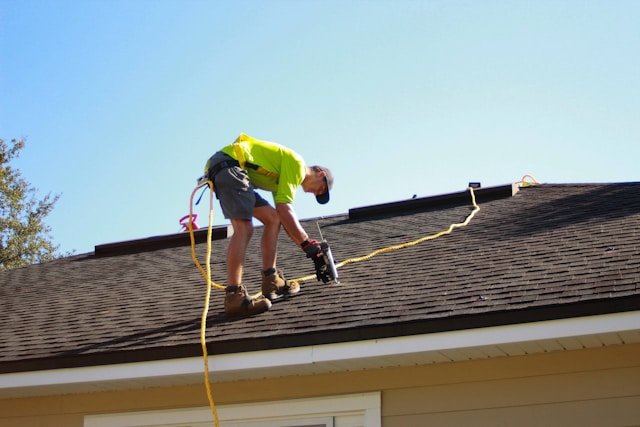
What are the Common Commercial Roof Issues and Solutions
It’s important to understand and fix roof problems to protect your business. A roof protects everything inside your building. Even minor issues can lead to costly repairs and interruptions. Early identification and the right solution can save you a lot of time and money in the long run. Let’s examine some of the most common issues and the best solutions to maintain your roof in good condition.
1. Leaks in Roof Membrane
Roof membrane leaks pose a serious concern for commercial buildings. The membrane serves as a protective barrier, but over time, it can degrade, crack, or get punctured. Leaks often occur at seams, vents, or flashing areas that allow water to get inside. It can cause interior damage, mold growth, and electrical problems.
Solution for Leaks in Roof Membrane
- Inspect for cracks, holes, or damaged seams.
- Seal cracks or replace damaged sections of the membrane.
- Reseal seams using compatible roofing sealant.
- Apply flashing around roof penetrations.
- Schedule regular inspections to detect potential damage early.
2. Standing Water (Ponding)
Ponding happens when water gathers in low areas on a flat roof. It’s common on older roofs with not enough slope for proper drainage. Water pooling can weaken the roof membrane, leading to leaks, mold, and potentially structural damage. Ponding water also accelerates the breakdown of roofing materials, which can reduce the lifespan of the roof. In Brooklyn, where storms and snow are frequent, ponding is a considerable risk for commercial roofs.
Solution for Standing Water (Ponding)
- Clean gutters, downspouts, and roof drains on a regular basis.
- Install additional drains to remove water more efficiently.
- Re-slope the roof to improve water flow.
- Apply a waterproof coating to reduce water buildup.
- Inspect for sagging areas and fix them early.
3. Damaged Flashing
Flashing is crucial for directing water away from joints, seams, and roof penetrations. If flashing becomes damaged due to age, weather, or physical damage, water can seep under it and cause leaks. Flashing issues are often hard to detect until they cause visible leaks inside the building. In Brooklyn’s unpredictable weather, especially during heavy rain and snow, damaged flashing can lead to significant damage to both the roof and the interior of the building.
Solution for Damaged Flashing
- Check for cracks or rust in flashing.
- Seal gaps with high-quality sealant.
- Replace damaged flashing with durable materials, such as aluminum or copper.
- Ensure flashing is secure around joints and roof penetrations.
- Reapply sealant regularly to maintain waterproofing.
4. Punctures from Debris
Punctures can occur when scraps, such as fallen branches, stones, or even construction tools, fall onto the roof. In Brooklyn, with its trees, construction sites, and windy weather, trash is a constant risk for commercial roofs. Even small punctures can lead to water infiltration, mold, and damage to insulation. Over time, they can weaken the roof, leading to leaks or other serious issues.
Solution for Punctures from Debris
- Regularly remove scraps from the roof.
- Patch small punctures immediately to avoid leaks.
- Install debris guards to protect the roof.
- Use more durable materials like reinforced TPO or PVC for added protection.
5. Poor Drainage
Poor drainage can cause water to build up on the roof and result in ponding and leaks. In Brooklyn, where heavy rain and snow are common, inadequate drainage is a major issue for flat roofs. Clogged gutters, blocked drains, or poor roof design can all contribute to drainage problems. These problems can quickly lead to expensive repairs or roof replacement.
Solution for Poor Drainage
- Clean roof drains and gutters frequently.
- Add more drains or scuppers if water is pooling.
- Reslope the roof to improve water flow.
- Install drainage mats or membranes for better water movement.

6. Roof Shrinkage
Roof shrinkage happens when roofing materials, such as EPDM, PVC, or TPO, expand and contract due to temperature changes. Over time, these materials lose their elasticity and shrink in size. This leads to seams pulling apart, gaps forming, and the potential for leaks. In Brooklyn, where the weather varies from hot summers to cold winters, shrinkage is a common occurrence. If left unchecked, roof shrinkage can weaken the roof structure, causing further damage and costly repairs.
Solution for Roof Shrinkage
- Inspect the roof regularly for visible gaps or cracks, especially around seams.
- Reseal any gaps with roofing sealant or replace damaged sections of the membrane.
- Apply reflective coatings to reduce UV damage and slow shrinkage.
- Ensure the proper installation of materials to avoid tension and stress that can lead to shrinkage.
- Regularly check for early signs of shrinkage and address them promptly.
7. Blistering of Roofing Membranes
Blistering happens when air or moisture gets trapped under the roof membrane. These bubbles or blisters form on the surface and weaken the roof’s protective layer. Blistering can result from poor installation, extreme heat, or the presence of trapped moisture. If the blistering is not repaired, it can lead to membrane damage, leaks, and even insulation issues. In Brooklyn, where temperatures can fluctuate rapidly, blistering is a common issue.
Solution for Blistering of Roofing Membranes
- Cut open the blister to release any trapped moisture or air.
- Clean and dry the area before resealing with compatible roofing materials.
- Apply new roofing adhesive to ensure the membrane is smooth and secure.
- Check for any other areas where moisture could be trapped and address them.
- Install proper ventilation to prevent future moisture buildup.
8. Cracked or Damaged Roofing Membrane
Cracks and tears in the roofing membrane allow water to reach the roof structure, which can cause leaks and structural damage. The membrane, which serves as the roof’s main barrier, can crack due to UV exposure, physical damage, or age. Once damaged, the membrane can no longer protect the building from the elements, and water can seep into the building.
Solution for Cracked or Damaged Roofing Membrane
- Inspect the roof regularly for visible cracks, tears, or wear in the membrane.
- Use roofing patches or sealant to cover any cracks or holes in the roof.
- For larger damages, replace the affected section of the membrane.
- Apply a protective coating to prevent further damage from UV rays.
- Regular maintenance and early repairs can prevent larger problems down the road.
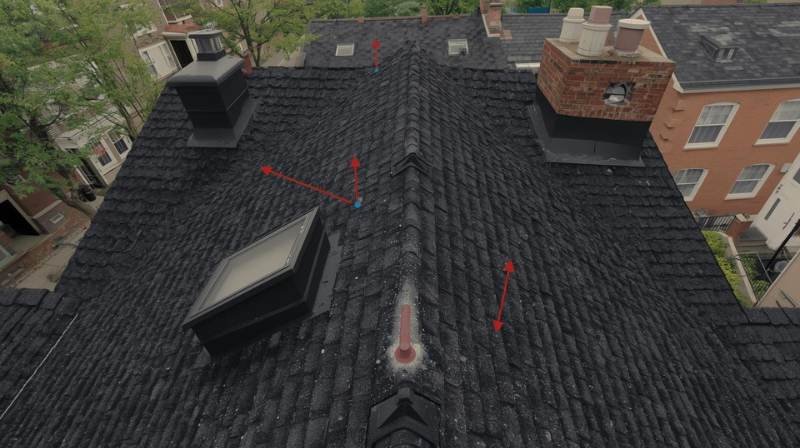
9. Moss, Algae, and Mold Growth
Moss, algae, and mold grow in damp places. On roofs, they retain moisture and prevent water from accumulating on the surface. This can damage the roof membrane, cause mold inside, and wear down the roof. In Brooklyn’s humid climate, these problems are common, especially in shaded areas. Over time, moss and algae can break down the roof material, resulting in leaks and premature damage.
Solution for Moss, Algae, and Mold Growth
- Regularly clean the roof to remove moss, algae, and debris.
- Use a pressure washer or a soft brush to scrub off moss and algae from the roof surface.
- Apply a roof cleaner or biocide that prevents future growth.
- Ensure proper drainage to reduce moisture buildup and create a dry environment.
- Trim overhanging branches to reduce shade and prevent moss growth.
10. UV and Heat Damage
UV rays from the sun and extreme heat can cause roofing materials to deteriorate over time. As the roof material faces UV radiation, it becomes brittle, cracks, and shrinks. Over time, this damage weakens the roof. UV rays cause the material to break down. The roof becomes brittle and can easily crack. As the roof material shrinks, it loses its strength. The heat from the sun speeds up this process. The roof may no longer protect the building as well.
Solution for UV and Heat Damage
- Apply a reflective coating to the roof to protect it from UV rays and reduce heat absorption.
- Choose UV-resistant roofing materials, such as TPO or PVC, for better long-term protection.
- Regularly inspect the roof for signs of cracking, brittleness, or fading.
- Reseal seams and edges where UV damage might be more pronounced.
- Install insulation underneath the roof membrane to reduce heat buildup.
11. Thermal Shock
Thermal shock happens when the roof heats up during the day and cools down at night. This constant change makes the roof material expand and contract. Over time, this stress causes cracks and weakens the roof. It can lead to leaks and further damage. The roof becomes vulnerable to weather damage. If not addressed, thermal shock can shorten the roof’s lifespan.
Solution for Thermal Shock
- Apply a UV-reflective coating to reduce temperature changes.
- Use flexible roofing materials that expand and contract easily.
- Ensure proper ventilation to regulate temperature.
- Inspect for cracks regularly and repair them promptly.
12. Roof Insulation Problems
Good insulation helps maintain a stable temperature in the building. If insulation is damaged, it allows heat and moisture to pass through. This causes energy loss and can lead to leaks. Inadequate insulation also allows condensation, which can lead to mold growth. It is important to check insulation regularly to avoid long-term damage. Insulation problems can worsen with changing weather.
Solution for Roof Insulation Problems
- Check insulation for moisture or damage.
- Replace old, wet insulation with new material.
- Seal any gaps to improve thermal efficiency.
- Use moisture-resistant insulation to prevent mold.
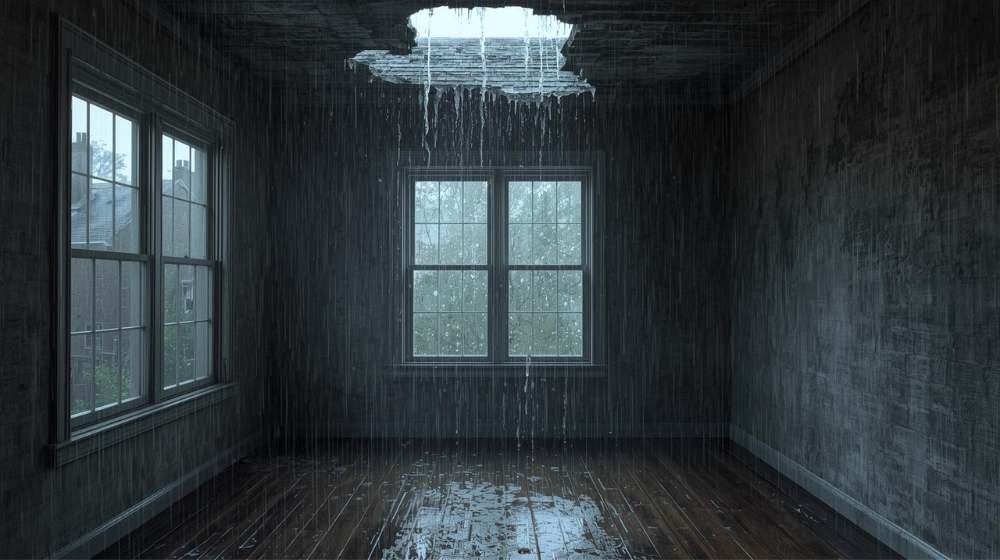
Follow the Commercial Roofing Maintenance Guide for Avoiding Common Problems
Proper roof maintenance is crucial for avoiding expensive repairs and keeping your roof in good condition. Regular upkeep helps spot small issues before they become major problems. Here’s a simple guide to help you maintain your commercial roof and avoid common issues.
- Inspect the Roof Regularly: Check your roof at least twice a year. Look for signs of damage, such as cracks, loose seams, or punctures. Observe the areas around vents, chimneys, and skylights carefully, as these are more likely to experience leaks.
- Clean Gutters and Drains: Keep gutters and drains free of debris. Clogged gutters can lead to water buildup, which can damage the roof. Clean them every few months to ensure proper water flow.
- Check for Standing Water: Inspect the roof for any pooling water. Stagnant water can cause membrane damage and accelerate roof deterioration. If you find any, address the drainage issue by adding new drains or adjusting the slope.
- Fix Minor Issues Quickly: Don’t wait for minor problems to become big ones. Repair cracks, holes, and damage as soon as you spot them. A simple patch or sealant can prevent more serious issues later.
- Check Flashing Around Penetrations: Flashing protects areas where the roof meets vents, chimneys, and pipes. Ensure that flashing is intact and properly sealed. Any loose or damaged flashing should be repaired immediately.
- Inspect Roof Insulation: Ensure the roof insulation is in good condition. Damaged insulation can cause heat loss or moisture problems, which can lead to further damage. Replace any wet or compressed insulation promptly.
- Reapply Protective Coatings: Apply UV-resistant coatings to protect the roof from the sun and extreme temperatures. This can help extend the roof’s lifespan and prevent shrinkage or cracking.
- Monitor Foot Traffic: Limit foot traffic on the roof. If workers need to access the roof, use mats or designated paths to avoid damage. Regularly inspect the roof for signs of damage from foot traffic.
Commercial Roofing Regulations and Compliance in Brooklyn
In Brooklyn, commercial roofing is governed by local building codes and regulations. These rules are in place to ensure safety, quality, and durability. Compliance with these regulations is mandatory to avoid fines, legal issues, and to ensure the roof performs as expected.
Roofing Regulations and Compliance in Brooklyn
- Follow Local Building Codes: Comply with the NYC Building Code for structural and material requirements.
- Permit Requirements: Obtain a permit before installing or replacing a roof.
- Energy Efficiency Standards: Use energy-efficient materials to meet local energy codes.
- Proper Drainage and Waterproofing: Ensure the roof has proper drainage and waterproofing to prevent leaks.
- Roof Access Regulations: Follow safety standards for roof access and maintenance.
- Inspection Requirements: Schedule regular inspections to ensure compliance.
- Roofing Material Standards: Use fire-resistant and durable roofing materials.
- Waste Disposal Regulations: Dispose of old materials according to NYC guidelines.
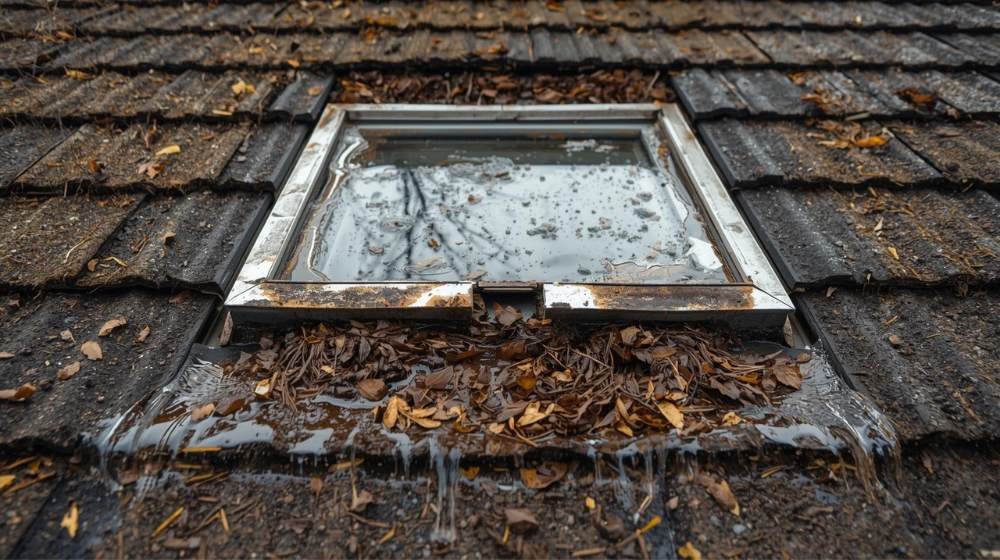
Where to Find a Professional Roofing Contractor in Brooklyn, NYC?
Are you looking for an expert roofing contractor in Brooklyn, NYC? SR General Construction has you covered! Our business is located at 8807 Avenue B, Brooklyn, NY 11236, United States, in the Canarsie area.
We proudly serve all areas of Brooklyn with high-quality, durable roofing solutions. From new installations to repairs and maintenance, we provide the best service at affordable prices. Contact us and experience why we’re Brooklyn’s roofing experts!
FAQ
1. What are the most common issues with commercial roofs in Brooklyn?
Commercial roofs in Brooklyn frequently encounter issues such as leaks, standing water, damaged flashing, and inadequate drainage. Extreme weather conditions, including snow, rain, and fluctuating temperatures, can be the reason for these problems.
2. How can I prevent leaks in my commercial roof?
Regularly inspect the roof for cracks or holes, especially around seams and roof penetrations. Seal any damage early and ensure the roof’s membrane is intact. Schedule inspections to catch potential leaks early.
3. How can I address standing water (ponding) on my roof?
Clean gutters and downspouts regularly. Install more drains if necessary and re-slope the roof to ensure water drains properly. Apply a waterproof coating to prevent water buildup.
4. Why is flashing important on a commercial roof?
Flashing directs water away from roof joints, seams, and penetrations. If it becomes damaged or loose, water can seep under the roofing material, causing leaks.
5. What are the best ways to prevent punctures from trash or scrap?
Use scrap guards, clear trash from the roof often, and inspect for punctures after storms or windy weather. Use durable roofing materials that are resistant to punctures and tears.
6. What causes roof shrinkage?
Roof shrinkage occurs when materials like EPDM or TPO expand and contract due to temperature changes. Over time, this leads to cracks and gaps, particularly in areas with extreme weather conditions.
7. What is the life expectancy of a commercial roof?
The lifespan of a commercial roof depends on the material, ranging from 15 to 60 years. Factors like climate, installation quality, and maintenance practices can significantly affect this duration.
